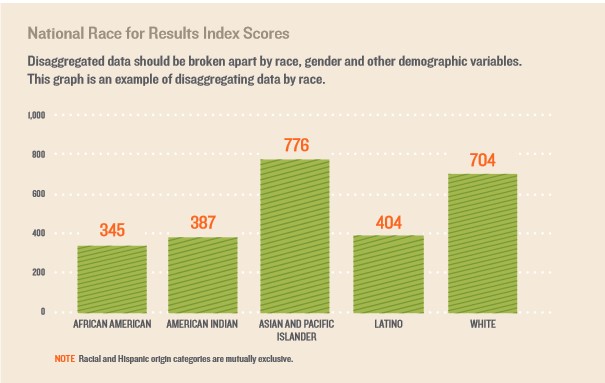Advancing Race Equity Resources and Tools
Advancing Race Equity
Race equity refers to a circumstance in which race is a neutral factor in determining how one fares. For example, with race equity, we would be able to see similar graduation rates among youth of various races--disparities attributed to race would be minimal.
Our goal is to promote race equity in the development and implementation of policies, programs, and our own personal interactions.
The framework used to present the resources and information within this section of the website are organized around the Annie E. Casey Foundation's Race Equity and Inclusion Action Guide: 7 Steps to Advance and Embed Race Equity and Inclusion Within Your Organization.
The adoption of these steps help to reduce race inequities within our organizations and systems that contribute to the differential outcomes observed among our children and families.
Step 1: Establish an Understanding of Race Equity and Inclusion Principles
Often, race-focused conversations derail because people are using the same terms in different ways. One of the challenges of communicating effectively about race is to move people from the narrow and individualized definition of racism to a more comprehensive and systemic awareness. To illuminate racism we need to “name it, frame it and explain it.”
Step 2: Engage Affected Populations and Stakeholders
One of the impacts of systemic racialization is the exclusion of people of color from many avenues of decision making, civic participation and power. People of color, the most direct stakeholders in the elimination of racism and those with the most first-hand experiences with its effects, must have a role in social-change efforts along with whites. Strive to engage stakeholders who have active and authentic connections to their respective communities. It is important to ensure meaningful participation, voice and ownership. The sooner you can engage a diverse mix of stakeholders, the sooner you will be able to move from talk to action in creating equitable opportunities for the communities you seek to serve.
Additional Resources on Engaging Affected Populations and Stakeholders
Step 3: Gather and Analyze Disaggregated Data
Advancing race equity for the populations that we serve requires data. Typically, data are reported for whole populations or as aggregates. However, data in all focus areas of organizations and systems should be broken apart by race, gender and other demographic variables whenever the data are available. The collection, analysis and use of race and ethnicity data should be an integral part of the continuing improvement efforts, quality assurance, supervision and accountability processes of every organization and public system.

Resources for Gathering and Analyzing Disaggregated Data
Step 4: Conduct Systems Analysis of Root Causes of Inequities
Disparities are systemic, the product of multiple decisions that precede the decision to apply discipline. Root cause analyses are necessary to identify the drivers that contribute to disparities.
Additional Resources on Root Cause Analysis
Step 5: Identify Strategies and Target Resources to Address Root Causes of Inequities
After conducting a systems analysis to identify the root causes of inequities, you can then begin to surface possible strategies and solutions for addressing the problems. Through thoughtful planning and engagement of key stakeholders and partners, you will create ways to shift your investments and resources to move solutions forward that can have transformative impacts on systems and communities.
Additional Resources to Address Root Causes of Inequities
bell hooks & john a. powell Belonging Through Connection from NYS CCF on Vimeo.
Step 6: Conduct Race Equity Impact Assessment for all Policies and Decision-making
A racial equity impact assessment is a systematic examination of how a proposed action or decision will likely
affect different racial and ethnic groups. It is a useful tool for assessing the actual or anticipated effect of proposed policies, institutional practices, programs, plans and budgetary decisions. The racial equity impact assessment can be a vital tool to reduce, eliminate and prevent racial discrimination and inequities and prevent institutional racism.
- Are all racial and ethnic groups that are affected by the policy, practice or decision at the table?
- How will the proposed policy, practice or decision affect each group?
- How will the proposed policy, practice or decision be perceived by each group?
- Does the policy, practice or decision worsen or ignore existing disparities?
- Based on the above responses, what revisions are needed in the policy, practice or decision under discussion?
Additional Resources for Equity Impact Assessments
Step 7: Continuously Evaluate Effectiveness and Adapt Strategies
doing this work.